The explosion of data brings both opportunity and trouble. A report from Edge Delta shows 97.2% of companies are investing in big data tools. But when data is mismanaged, the cost adds up. According to Gartner, poor data quality costs the average business about $12.9 million a year.
This is where solid big data governance makes a difference. With the right plan in place, data becomes reliable, usable, protected, and compliant. It moves from raw noise to real value. Below, we break down the key elements: who’s involved, the frameworks behind it, common issues, and a look at how it plays out in practice.
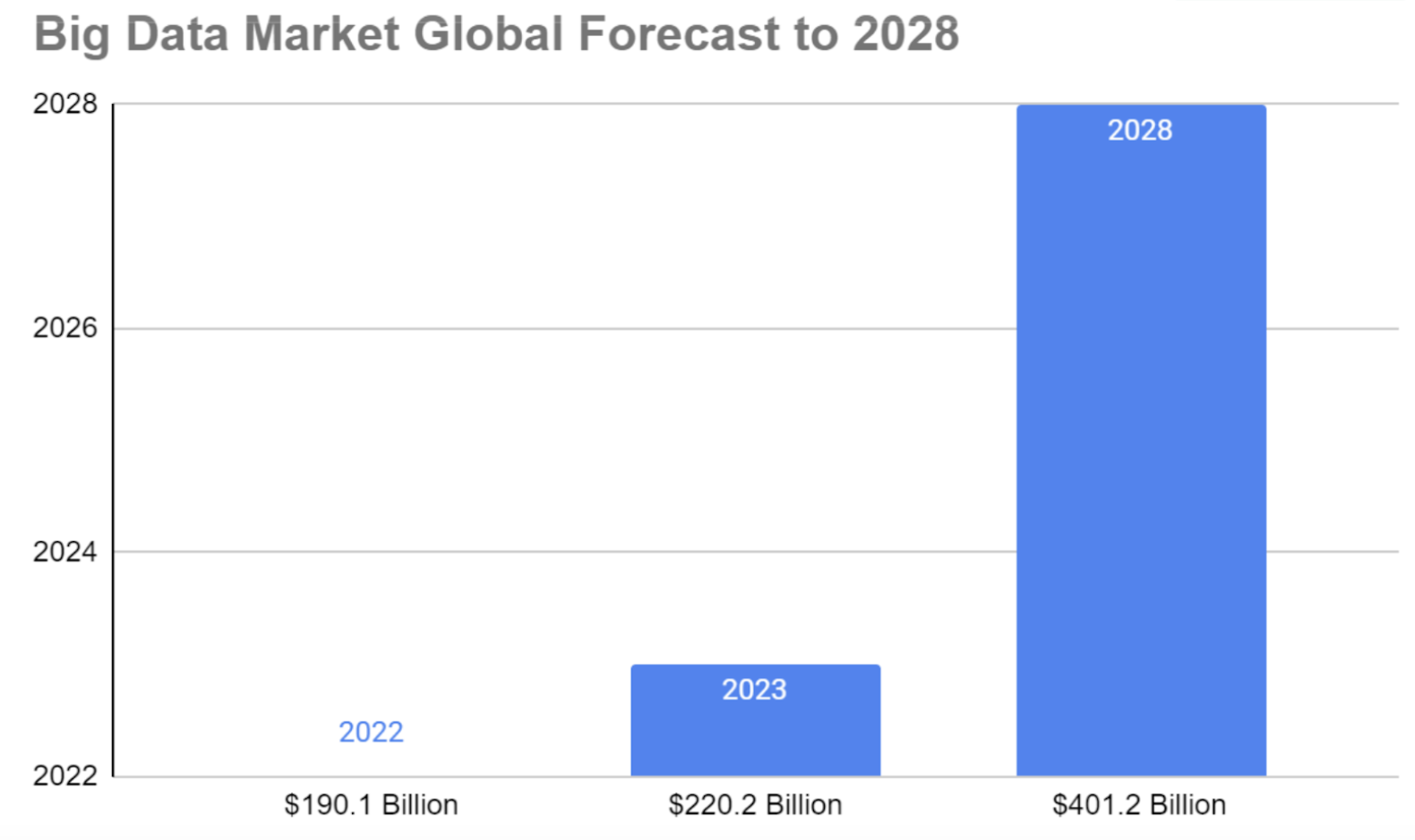
The big data market is set to grow from $220B in 2023 to over $400B by 2028.
Source: Markets and Markets
What is big data governance and why is it essential?
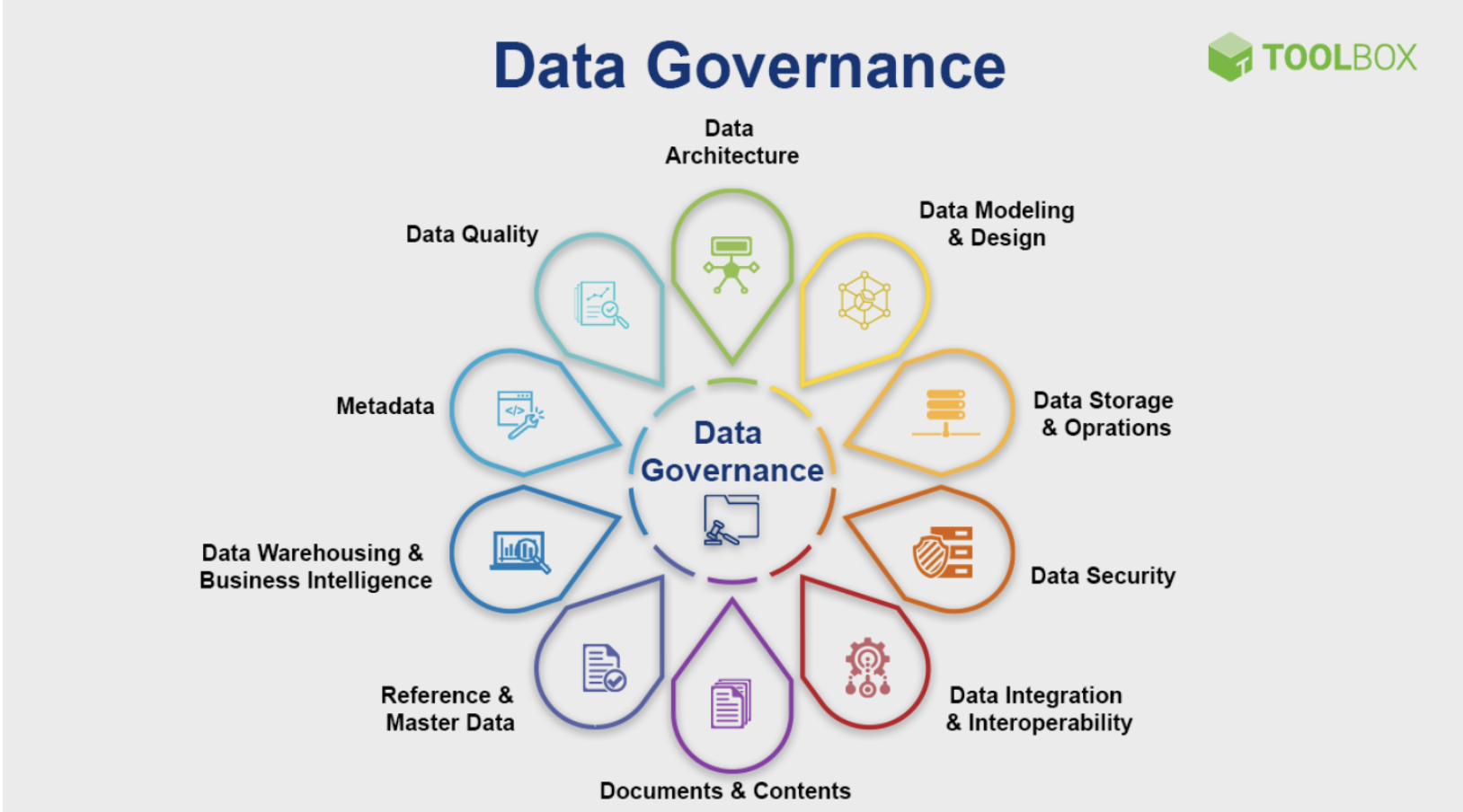
Source: Spiceworks
Put simply, big data governance sets the rules for managing the massive, messy, and mixed data that companies rely on. Unlike traditional governance, it’s built to handle newer data types, social media streams, IoT sensor inputs, and constantly shifting formats.
Large volumes, fast flows and a wide variety are traits that demand something more than legacy systems can offer. The principles will seem familiar, but the approach must flex to fit data that never stands still.
Why does it matter? Because when governance is done right, teams can actually trust the data they use. It keeps businesses on track with privacy laws like HIPAA and GDPR, cuts back on waste, lowers risk, and unlocks smarter decisions. Companies handling big data effectively managed to boost their revenue by 8% and reduce costs by 10%.
How does data management differ from data governance?
Understanding the difference between data management and governance is crucial.
Data management
refers to the broad set of practices involved in data collection, storage, integration, security, and quality assurance.
Data governance
, a subset of data management, provides the framework of policies, regulations, standards, roles, and responsibilities that ensure data is used properly and consistently across an organization.
As Kunjal Agrawal's article on Medium notes, formal data governance systematizes control over data management processes, enabling their full benefits. This distinction, important for data strategy decision-makers, ensures governance effectively guides daily data handling.
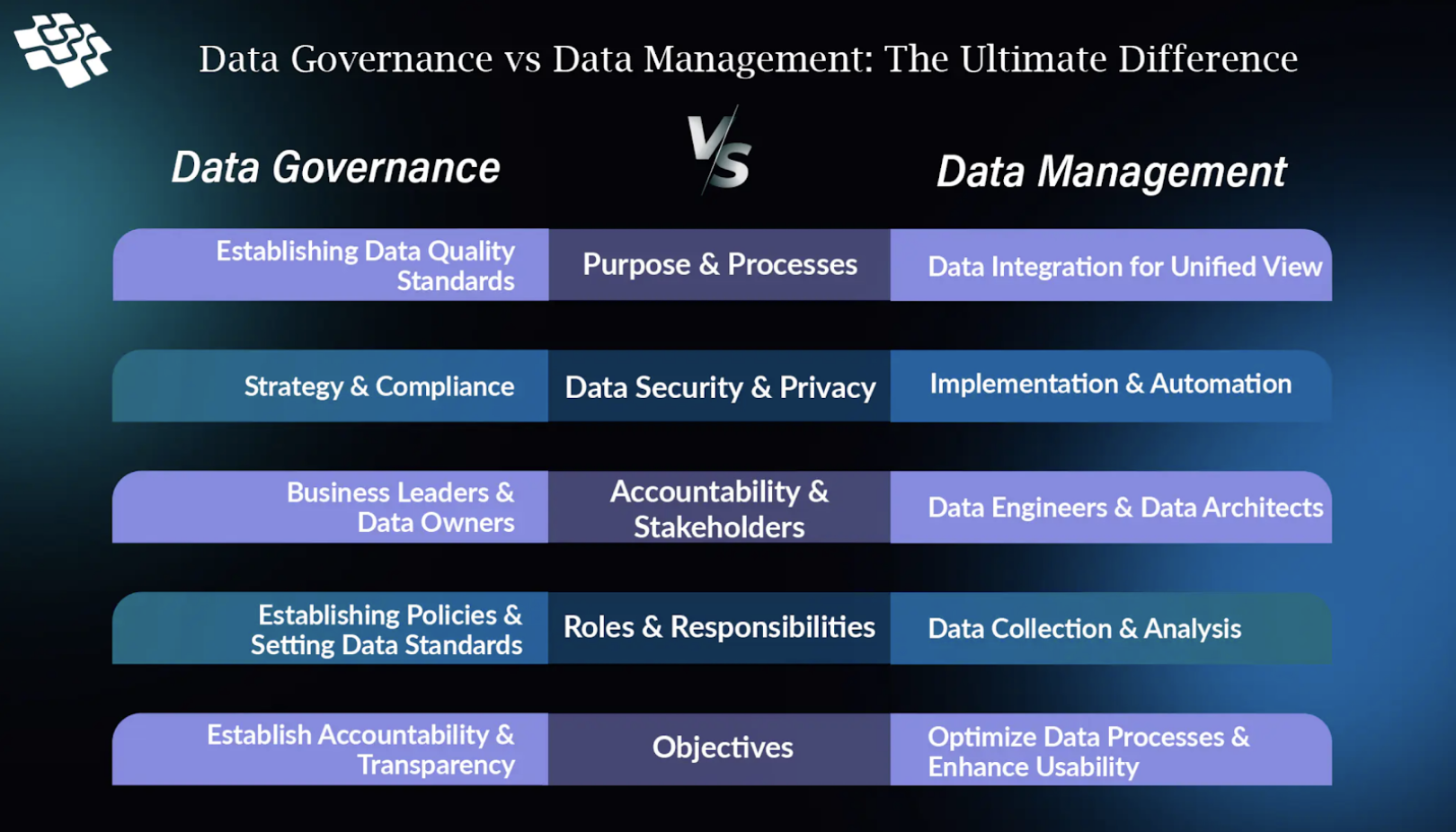 Key differences between data governance and data management across roles, goals, and processes.
Key differences between data governance and data management across roles, goals, and processes.
Source: NextGen Invent
What are the key roles and responsibilities in big data governance programs?
A successful program needs clear roles and real cooperation. Here’s who you’ll usually see involved:
- Governance Committee: Senior managers and experts who steer the entire governance program.
- Chief Data Officer (CDO): Oversees the data strategy and makes sure it’s followed.
- Data Owners: Usually department heads; they’re responsible for the data in their domains.
- Data Stewards: Keep data consistent and safe. They coordinate between tech teams and the business side.
- Data Architects: Design systems so data flows well and supports broader company goals.
- Data Engineers: Build, clean, and connect the underlying data systems.
- IT Teams: Set up, maintain, and secure the hardware and software that supports governance.
- Everyday Data Users: Employees using data daily are also responsible for following governance policies.
What frameworks and methodologies guide big data governance?
A governance framework organizes data management from inception to disposal and includes numerous critical components. Data collection, use, and storage start with clear, realistic regulations and standards.
Roles and duties establish ownership and accountability throughout the data process. Extended data warehouse (XDW) models can accommodate mixed data types in the framework's specialized technological stack, which includes scalable tools and systems to handle data volume and regulatory needs.
Data lifecycle management, from creation to processing, analysis, and secure deletion, is another important aspect. The Digital Regulation Platform guide details planning, collection, processing, and disposal. Finally, business alignment ensures that data decisions support the organization's strategic goals.
Accountability, transparency, stewardship, and regulatory compliance underpin these components. DAMA-DMBOK and COBIT provide useful templates, but each business will tailor its governance structure to its needs and surroundings.
What are common challenges in big data governance and management?
Implementing big data governance faces several challenges. Poor data quality is the main issue, but other challenges include:
- Siloed Systems: Isolated data pockets make unified governance harder. Inconsistency across sources is a major data quality problem.
- High Volume and Mixed Quality: Huge datasets vary in quality, and consistency’s hard to maintain.
- Lack of Top-Level Support: Lack of leadership support can stall initiatives.
- Not Enough Tools or Talent: Difficulty finding or investing in the right technologies and skilled personnel.
- Security and Legal Pressures: Meeting HIPAA, GDPR, CCPA and other rules isn’t simple, especially as data spreads.
- Hard-to-Merge Legacy Systems: Combining data from diverse and legacy systems is technically challenging.
- Scalability Issues: Frameworks must scale with the data.
- Low Accountability: Leaders often don’t see data quality as their responsibility, even though it affects every part of the business.
Addressing these proactively is key to a resilient governance ecosystem.
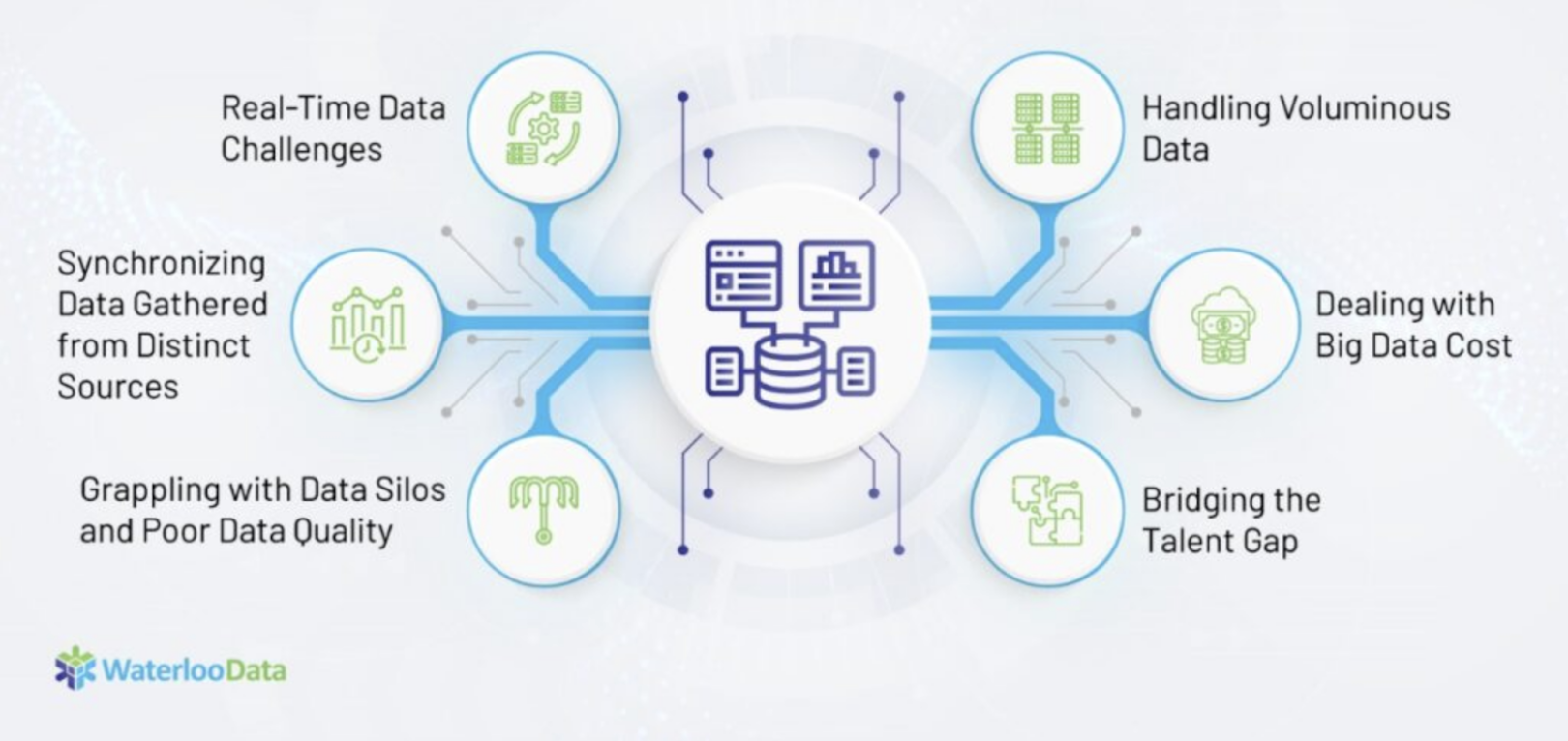 Top big data challenges businesses must address.
Top big data challenges businesses must address.
Source: Waterloo Data
A big data governance framework provides a structured way to manage and protect data assets. Core parts include:
- Governance Platforms: Centralize management of governance activities. The Multishoring guide mentions Collibra Data Intelligence Cloud for its comprehensive workflows.
- Data Catalogs: Tools like Alation help find, track, and understand what data you have using AI.
- Metadata Tools: IBM’s InfoSphere is a good example since it provides context for your data and manages the data about data.
- Data Quality Monitors: Talend Data Fabric tracks, cleans, and scores your data on demand.
- Security and Compliance Software: Microsoft Purview helps keep things airtight and audit-ready. The focus is on access controls, encryption, and regulatory adherence.
- Integration Systems: Pull data together from multiple sources and formats for one unified view.
Organizations can also leverage specialized data governance services. Kanda, for instance, offers analytics services to help establish and operationalize big data governance.
How can organizations strategize for integration with existing data infrastructure?
If you’re combining big data governance with systems already in place, it needs to be done in steps. A few basics help guide the process:
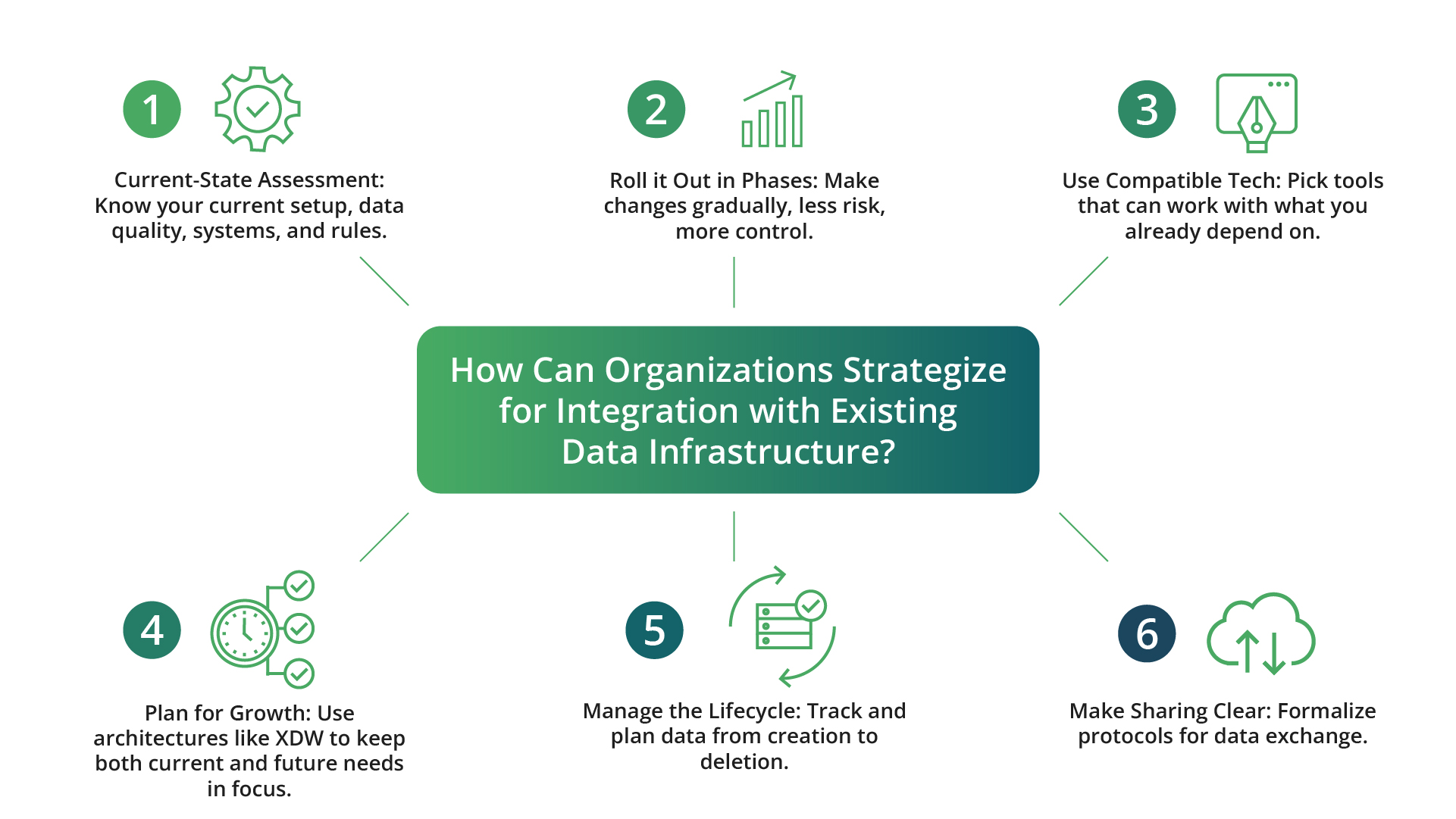
- Current-State Assessment: Know your current setup, data quality, systems, and rules.
- Roll it Out in Phases: Make changes gradually, less risk, more control.
- Use Compatible Tech: Pick tools that can work with what you already depend on.
- Plan for Growth: Use architectures like XDW to keep both current and future needs in focus.
- Manage the Lifecycle: Track and plan data from creation to deletion.
- Make Sharing Clear: Formalize protocols for data exchange.
The article on Data Trends 2025 underscores the need for such integrated strategies.
How Kanda Can Help
Big data governance needs specialized knowledge. Kanda Software guides organizations in setting up and making strong big data governance frameworks work. We help you:
- Develop Governance Frameworks: Design frameworks for your industry, goals, and rules.
- Strategize for Seamless Integration: Our experts help combine governance with your existing data infrastructure.
- Select and Implement Governance Tools: Kanda guides on choosing and putting in place suitable big data governance tools.
- Make Data Quality and Security Better: Set up processes for high data quality and use full security, including strong Cloud Security.
- Meet Compliance and Challenges: Help with big data management challenges and meeting compliance needs, for areas like AI in Finance.
Talk to our experts to discover how Kanda can help you implement effective big data governance, transforming your data into a secure, reliable asset.
Conclusion
Good data doesn’t just manage itself. Governance is what turns raw information into something teams can actually use. Done well, it drives smarter choices, lowers risk, and lays the groundwork for meaningful growth.
With the right plan and people in place, governance goes from theory to daily practice.

 The big data market is set to grow from $220B in 2023 to over $400B by 2028.
Source: Markets and Markets
The big data market is set to grow from $220B in 2023 to over $400B by 2028.
Source: Markets and Markets
 Source: Spiceworks
Put simply, big data governance sets the rules for managing the massive, messy, and mixed data that companies rely on. Unlike traditional governance, it’s built to handle newer data types, social media streams, IoT sensor inputs, and constantly shifting formats.
Large volumes, fast flows and a wide variety are traits that demand something more than legacy systems can offer. The principles will seem familiar, but the approach must flex to fit data that never stands still.
Why does it matter? Because when governance is done right, teams can actually trust the data they use. It keeps businesses on track with privacy laws like HIPAA and GDPR, cuts back on waste, lowers risk, and unlocks smarter decisions. Companies handling big data effectively managed to boost their revenue by 8% and reduce costs by 10%.
Source: Spiceworks
Put simply, big data governance sets the rules for managing the massive, messy, and mixed data that companies rely on. Unlike traditional governance, it’s built to handle newer data types, social media streams, IoT sensor inputs, and constantly shifting formats.
Large volumes, fast flows and a wide variety are traits that demand something more than legacy systems can offer. The principles will seem familiar, but the approach must flex to fit data that never stands still.
Why does it matter? Because when governance is done right, teams can actually trust the data they use. It keeps businesses on track with privacy laws like HIPAA and GDPR, cuts back on waste, lowers risk, and unlocks smarter decisions. Companies handling big data effectively managed to boost their revenue by 8% and reduce costs by 10%.
 Key differences between data governance and data management across roles, goals, and processes.
Source: NextGen Invent
Key differences between data governance and data management across roles, goals, and processes.
Source: NextGen Invent
 Top big data challenges businesses must address.
Source: Waterloo Data
Top big data challenges businesses must address.
Source: Waterloo Data




